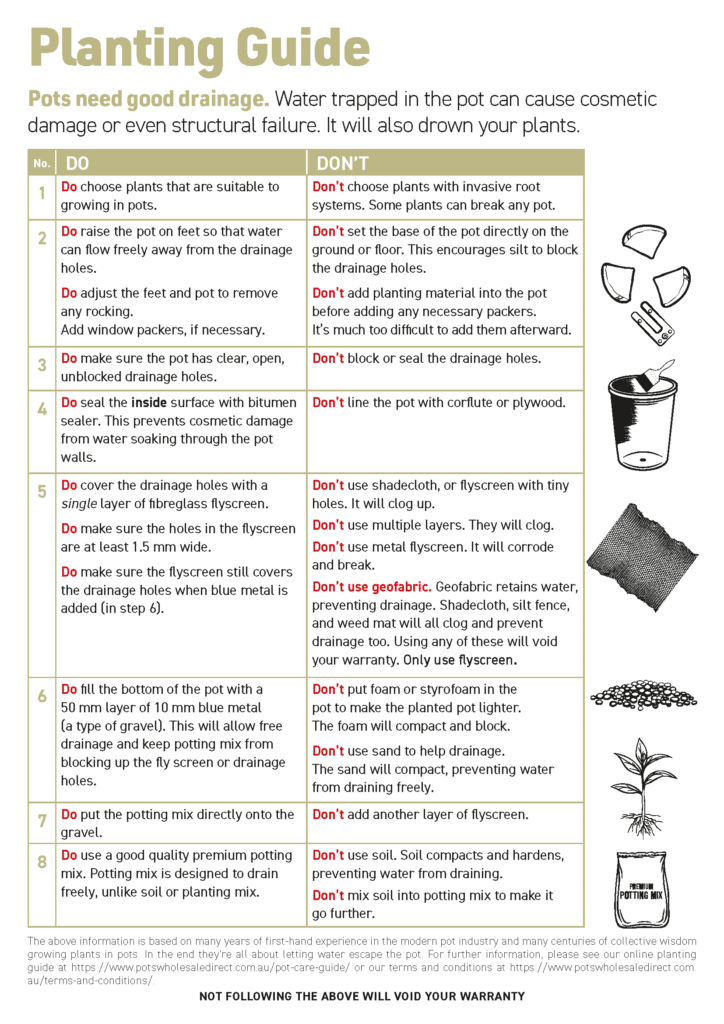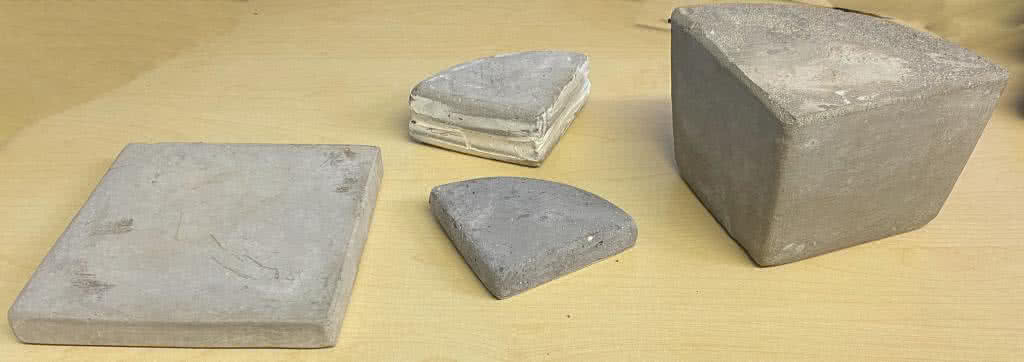POT PLANTING GUIDE
Pots need good drainage. Water trapped in the pot can cause cosmetic damage or even structural failure. It will also drown your plants.

We recommend filling the bottom 100 mm of your pot with a 10 mm aggregate to ensure free-flowing drainage. We sell 10 mm blue metal in 20 kg bags for $11.95 per bag, but any hardware store should have some in stock. Do not use finer aggregates – no sand, no tiny pebbles.
Fly Screen
To prevent gravel or potting mix falling through the holes at the bottom of the pot, we recommend placing a single layer of fly screen in the bottom of the pot. Use fibreglass or plastic fly screen, not metal—the metal type will corrode and break. The holes should be at least 1 mm wide to prevent clogging, but we recommend 1.5 mm. We sell the following pre-cut sizes for your convenience:
| L | W | Price |
| 30 | 30 | $1.95 |
| 61 | 61 | $2.95 |
| 91 | 46 | $3.95 |
| 91 | 91 | $6.95 |
Pot Feet
We recommend raising your pots on pot feet to prevent silt clogging and to help ensure good drainage. We sell the following styles of feet:
| L | W | H | Price | Custom |
| 9 | 9 | 2 | $3 | $5 |
| 9 | 9 | 4 | $10 | |
| 15 | 15 | 2 | $8 | |
| 12.5 | 12.5 | 10 | $10 |
Pots need good drainage. Water trapped in the pot can cause cosmetic damage or even structural failure. It will also drown your plants.
We recommend filling the bottom 100 mm of your pot with a 10 mm aggregate to ensure free-flowing drainage. We sell 10 mm blue metal in 20 kg bags for $11.95 per bag, but any hardware store should have some in stock. Do not use finer aggregates – no sand, no tiny pebbles.
Fly Screen
To prevent gravel or potting mix falling through the holes at the bottom of the pot, we recommend placing a single layer of fly screen in the bottom of the pot. Use fibreglass or plastic fly screen, not metal—the metal type will corrode and break. The holes should be at least 1 mm wide to prevent clogging, but we recommend 1.5 mm. We sell the following pre-cut sizes for your convenience:
| L | W | Price |
| 30 | 30 | $1.95 |
| 61 | 61 | $2.95 |
| 91 | 46 | $3.95 |
| 91 | 91 | $6.95 |
Pot Feet
We recommend raising your pots on pot feet to prevent silt clogging and to help ensure good drainage. We sell the following styles of feet:
| L | W | H | Price | Custom |
| 9 | 9 | 2 | $3 | $5 |
| 9 | 9 | 4 | $10 | |
| 15 | 15 | 2 | $8 | |
| 12.5 | 12.5 | 10 | $10 |

